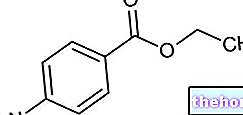
What is Temozolomide Hexal?
Temozolomide Hexal is a medicine that contains the active substance temozolomide. It is available as capsules (white-green: 5 mg; white-yellow: 20 mg; white-pink: 100 mg; white-blue: 140 mg; white-brown: 180 mg; white: 250 mg).
Temozolomide Hexal is a 'generic medicine', which means it is similar to a 'reference medicine' already authorized in the European Union (EU) called Temodal.
What is Temozolomide Hexal used for?
Temozolomide Hexal is an anticancer medicine. It is indicated for the treatment of malignant gliomas (brain tumors) in the following patient groups:
adults with newly diagnosed glioblastoma multiforme (aggressive brain tumor). Temozolomide Hexal is used first in conjunction with radiotherapy and then on its own (alone);
adults and children aged three years and over with malignant gliomas, such as glioblastoma multiforme or anaplastic astrocytoma, when the cancer recurs or worsens after standard therapy. Temozolomide Hexal is used alone in these patients.
The medicine can only be obtained with a prescription.
How is Temozolomide Hexal used?
Treatment with Temozolomide Hexal should be prescribed by a doctor experienced in the treatment of brain tumors.
The dosage of Temozolomide Hexal, given once daily, depends on the body surface area (calculated using the patient's height and weight) and ranges from 75 to 200 mg per square meter. The dosage and number of doses depend on the type of tumor to be treated, whether the patient has previously been treated, whether Temozolomide Hexal is used alone or with other therapies, and the patient's response to treatment. Temozolomide Hexal should be taken between meals.
Before being given Temozolomide Hexal, patients may also need a medicine that prevents vomiting. Temozolomide Hexal should be used with caution in patients with severe liver problems or kidney problems.
For complete information, see the Summary of Product Characteristics (also included in the EPAR).
How does Temozolomide Hexal work?
The active substance in Temozolomide Hexal, temozolomide, belongs to a group of anticancer medicines called alkylating agents. In the body, temozolomide is converted into another compound called MTIC. MTIC binds to the DNA of cells during the reproductive phase, thereby blocking cell division. As a result, cancer cells cannot reproduce and tumor growth is slowed down.
How has Temozolomide Hexal been studied?
Since Temozolomide Hexal is a generic medicine, the studies have been limited to evidence designed to show that the medicine is bioequivalent to the reference medicine, Temodal. Two drugs are bioequivalent if, once in the body, they deliver the same levels of active ingredient.
What are the benefits and risks of Temozolomide Hexal?
Because Temozolomide Hexal is a generic medicine and is bioequivalent to the reference medicine, its benefits and risks are assumed to be the same as the reference medicine.
Why has Temozolomide Hexal been approved?
The Committee for Medicinal Products for Human Use (CHMP) concluded that, based on the requirements of EU legislation, Temozolomide Hexal has been shown to have comparable quality and to be bioequivalent to Temodal. Therefore, the CHMP is of the opinion that, as in the case of Temodal, the benefits outweigh the identified risks. The Committee therefore recommended the granting of a marketing authorization for Temozolomide Hexal.
Other information about Temozolomide Hexal
On March 15, 2010, the European Commission granted Hexal AG a "Marketing Authorization" for Temozolomide Hexal, valid throughout the European Union. The "Marketing Authorization" is valid for five years, after which it can be renewed.
For the full EPAR version of Temozolomide Hexal click here. For more information on therapy with Temozolomide Hexal, please read the package leaflet (included with the EPAR).
The full EPAR version of the reference medicine is also available on the EMEA website.
Last update of this summary: 01/2010.
The information on Temozolomide Hexal published on this page may be out of date or incomplete. For a correct use of this information, see the Disclaimer and useful information page.




























